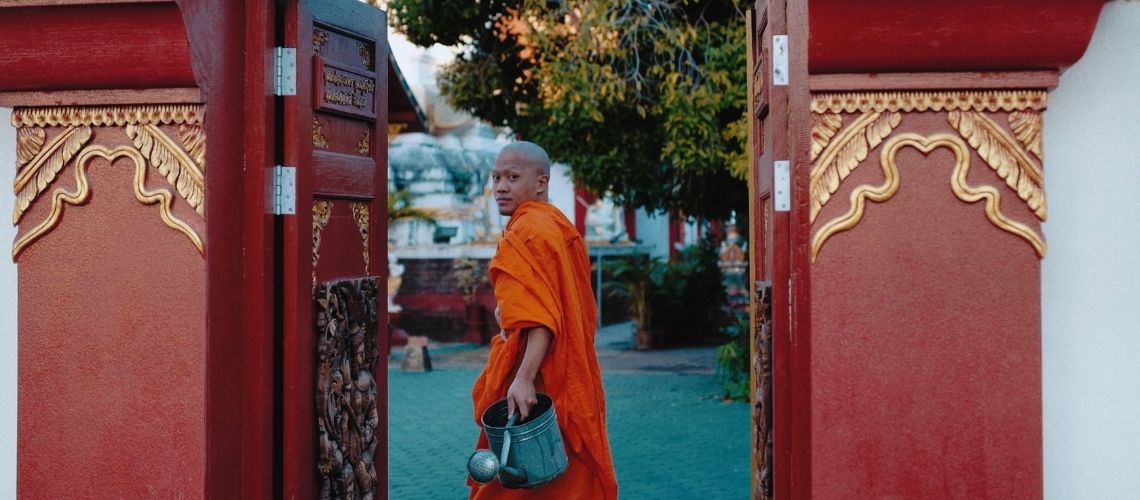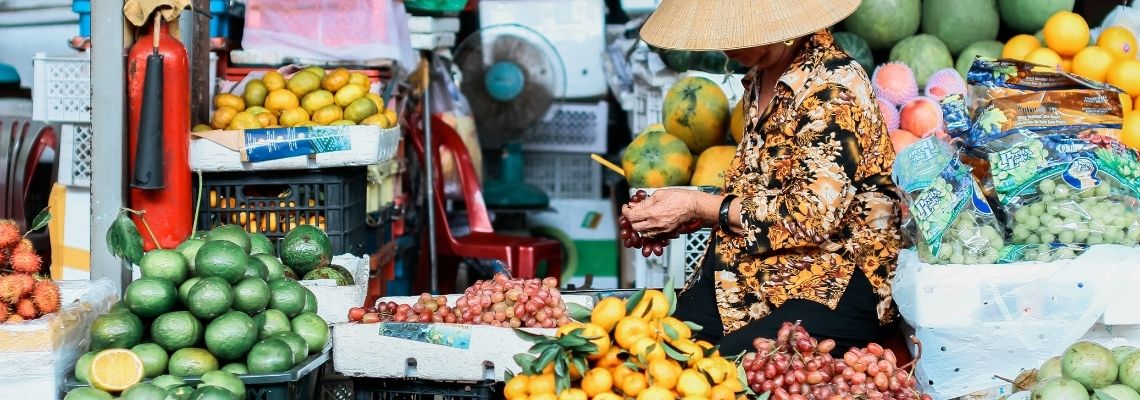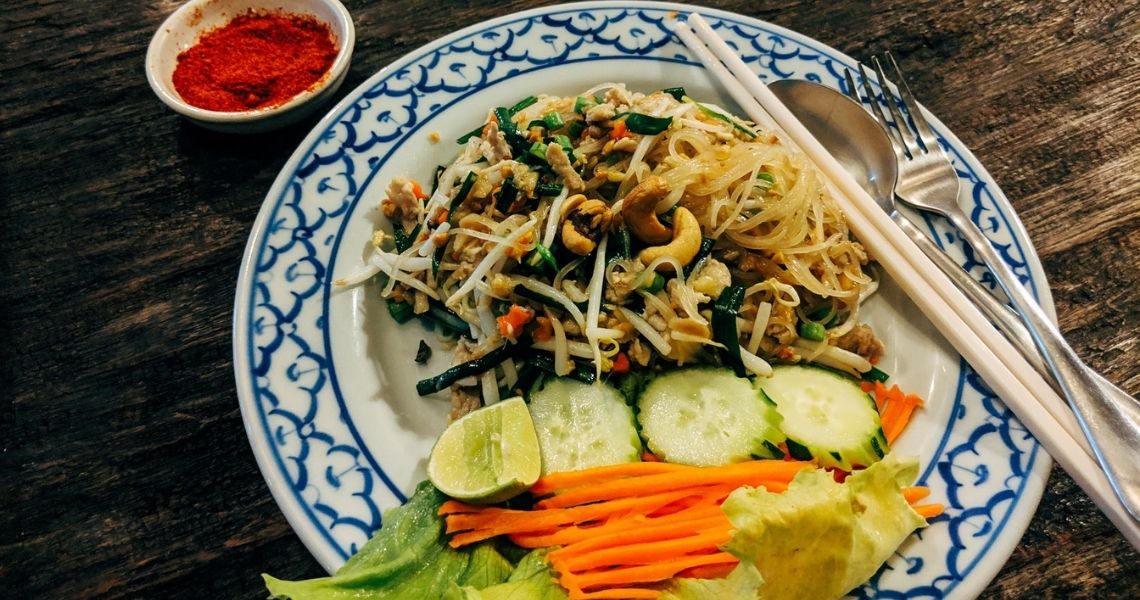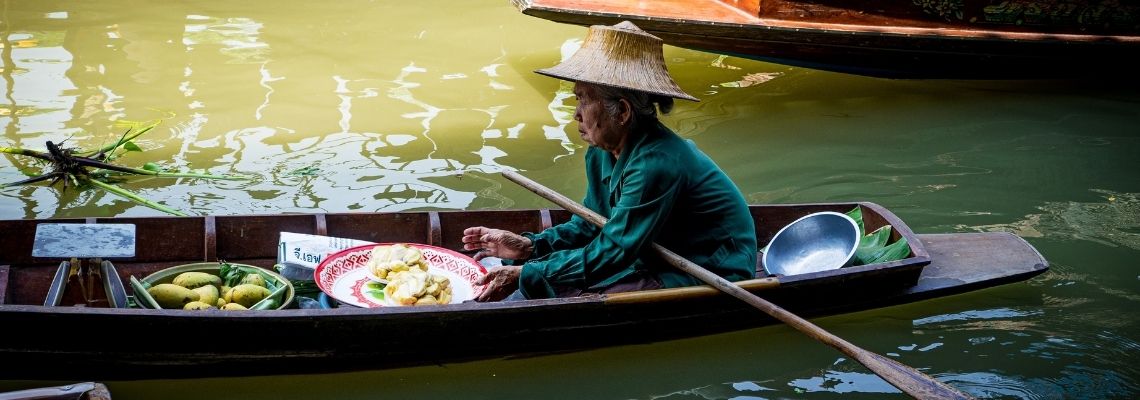![]()
Thailand is a wonderful place that offers so many different experiences. Everything from culture, history, nature, incredibly delicious food and pure relaxation, can be found in one and the same country. Depending on how you plan your trip, there are many activities to do in Thailand – and it can seem overwhelming with backpacking in Thailand. Therefore, in this series of articles, we will try to get all the way around traveling to Thailand so that you can have the best experience.
There can be many things to keep track of when you arrive in a new country. It is whether you are an experienced traveler or are traveling the world for the first time. Everything works differently than what you come from when you first arrive. Language, noise, transportation, smells, temperature, how people act and more. To help you on your way when you are backpacking in Thailand, we have gathered the best tips and information.
Transport in Thailand
When traveling around Thailand, there are many ways you can transport yourself. The country’s infrastructure is good, and this is a clear advantage when the country contributes with so many exciting and eventful opportunities.
There are 33 airports , so if you do not want to use the local transport on the longer trips around the country, you can easily hop on a domestic flight from A to B. This can be an advantage if your planned trip goes from one end of landed to the other.
If you want an authentic trip from AB, then there is both the option of the local bus and the local train in Thailand. With this mode of transport, you get the opportunity to see the country from an angle you do not get seen from an airplane. This form of travel is for us, something we can only recommend you to make use of if the time is right – plus, it is cheaper for you with a train or bus ticket than plane.
Train lines run across most of the country with destinations to all the major cities. You may encounter a train change along the way, but this only gives you the opportunity to explore the city you need to change trains in if the waiting time between departures is longer than expected. It is rarely necessary to book seating as this is included in your train ticket. You can easily book your train ticket on the day you want to travel, either at the local train station or online.
You can find departure times and routes for trains in Thailand here
In all cities, no matter where in the country you may end up, you also have the opportunity to take a tuk-tuk ride. A quick opportunity to get back and forth – and if you have decided to go but get tired, then a tuk-tuk is highly recommended. However, we would also recommend that you agree on a price with the driver in advance. When you are backpacking in Thailand, a tuk-tuk can also be an easy and quick choice if you have been walking around for a long time – whether with a backpack on your back or not.
Currency in Thailand
In Thailand, you pay with the Thai krone, bath (THB), and 5 THB corresponds to 1 kr. See latest exchange rates here.
You can easily pay by credit card in Thailand just as you can at home – but you must be aware of any payment fees may occur. The easiest thing in Thailand is to pay with cash.
You can easily withdraw a little cash in Denmark before your departure, so you do not have to stand in line for the ATM at the airport. Cash is the most common form of payment in Thailand at restaurants, attractions, markets and means of transport, so the easiest thing for you is to use cash as payment. There is ample opportunity to withdraw cash around the country. You can withdraw at ATMs, but if you want to withdraw directly at a bank, this can also be an option.
The price level in Thailand is not very high and you can get far for your money. But even though money can take you far and wide, we recommend that you keep track of some of the things or cities you need to visit, from home – we thought it was nice to have a fair overview of how much money we should put aside. Make sure you have your money distributed and not gathered somewhere when you are on a trip. Have parts of your cash in your backpack, in your belt bag and a third place in case of an accident.
The Thai Culture
Buddhism

95% of the Thai population are Buddhists and this can be clearly felt no matter where in the country you are located as the country is the third largest country in the world in terms of number of Buddhists.
Part of the cultural pride in Buddhism is found in their extremely beautiful and unique temples. Thailand offers about 35,000 temples, and is called by many travelers “land of temperles”. There are many who think of beautiful gold-plated as well as colorful temples as the first thing when they think of Thailand – and we do the same, because many of the temples are unforgettable and make it a big part to travel around the country. As a tourist, you can also visit many of the temples, which is a must-do when you are in Thailand.
A big part of the culture is to show respect and compassion, and this you will also be able to feel everywhere in Thailand. As you probably know, locals bow to each other when greeting in large parts of the world, and this is what they do in Thailand as well. In Thai culture, it is significantly necessary to show respect for the heads of your fellow human beings – and from this comes the bow. In the local culture, the head is the most valuable body part of the body, and it is therefore not allowed to touch the heads of others – neither the elderly nor children.
Cultural differences between Thailand and Denmark
There will always be many cultural differences when coming to a new country, and the same is true when coming to Thailand. It will be difficult for a tourist to abide by all the rules that the locals agree with right from childhood. However, there are a few that are a necessity to adhere to. A good way to remember: your feet are unclean. In Buddhism, your feet are seen as unclean, and this is worth keeping in mind when traveling in Thailand – so if you have the following in mind, you are well on your way:
- Be sure to walk around people if they are sitting down, never over. It is a sign of inferiority
- If you have your legs over the crotch, avoid that the sole of your foot on your upper foot points towards a sacred element, e.g. a Buddha statue or a temple
- If you see a banknote, pick it up with your hands and do not step on it, even if it should blow. The King of Thailand is on the banknotes, and is considered sacred
- As a rule, always keep your feet lower than your knees when sitting down

Thai food culture
It’s not just about beliefs in Thailand when it comes to culture. Food culture plays a big role in much of what Thailand stands for, and is known for. If you have not been involved with Thai cuisine yet, do yourself a favor and give it a shot – your taste buds will thank you!
Unfortunately, Asia has a reputation for the fact that the food served often or always consists of rice. Yes, rice is a part of Asian eating, but fortunately, the culinary experiences in Thailand contain far more than just rice. Thai cuisine is characterized by the use of fresh herbs and spices, and is particularly known for its ability to combine the five flavors: salty, sweet, sour, bitter and strong.

Part of the dining experience in Thailand is to get “on par” with the locals, and enjoy your food at the many Street Food restaurants. As throughout Asia, find good stories and local moments in the context of eating. You will find street kitchens everywhere your trip to Thailand may bring you where wonderful scents will whirl your nose past. There is plenty of opportunity to order a little of each when eating out in Thailand, but we have three favorites we can highly recommend:
- Pad Thai . Classic Thai dish. A rice / noodle dish with either chicken, beef or fish
- Tom Kha Gai . Delicious and creamy coconut soup, often served with chicken and lime
- Panang . Thai red curry. Often mixed with rice, vegetables or chicken

One good thing about Thailand is that you as a traveler can afford to eat out every day. When you are backpacking in Thailand, and maybe have a smaller budget, this is a huge plus. A meal for two people where drinks are included does not have to cost more than a total price of DKK 100. It is a price that is manageable, and a price that means that it does not matter to order a few extra spring rolls. Keep in mind that in rural areas, local Thais can earn up to 300 baht a day – which has an impact on the cheap and local country cuisine you can find “off the beaten track”.
When you travel in Thailand, you will quickly become good at handling a set of chopsticks – and if you are already a shark for that, it is just an advantage. All food is basically eaten with a bandage, and prepared so that this is exactly what is possible. If you order a soup, you can get a spoon, but the easiest thing is to drink directly from the bowl.
The opportunity to buy fresh fish, fresh fruit, snacks and even clothing great. Around all the cities in Thailand, you will find markets of one kind or another. You will no doubt have a richer experience when you visit a market – it is an authentic experience that is difficult to describe. Since the country consists of many rivers or canals, there are also ” floating markets ” – floating markets. This market form is one of the oldest in Thailand, and is to this day used across the country, and is a favorite attraction for tourists.

Climate and wildlife in Thailand
The climate in Thailand
It probably does not come as a shock when we write: it is hot in Thailand. The average temperature is 27 degrees all year round, but the temperature varies depending on where you are. If you travel in the cities close to the country’s mountains, you must adjust to lower temperatures than in the cities on the coast.
Even though the temperature is high, you also have to adjust to a rainstorm every now and then – especially if you travel in the months of May-October. These months are the most rainy in Thailand due to rainy season. Should there be a hole in the sky, do not be afraid of freezing even if you get wet – the temperature will still be high. For this very reason, you will in all probability experience a proper thunderstorm that in no way can be compared to what you experience in Denmark.
If you want to avoid rain as much as possible, go in our winter months November – March. Traveling during these months certainly does not matter, because those are the months when we thought Denmark was too cold and gray, and therefore it is the best time to travel to Thailand
One of the things that is good about the climate in Thailand is that you can get a little of it all. If you want a sand level with crystal clear water, where the only purpose is to get a good color on the body, this can easily be done – and conversely, if you want a “cooler climate”, you can travel to the northern part of the country where the rice fields are paramount.
Wildlife in Thailand
Thailand is a country rich in wildlife, whether you travel to both large and villages.
Here in Denmark, it is cats, pigeons or seagulls we see running across the road and are part of the daily picture, but in Thailand it is not abnormal if monkeys walk on the roads or hang in the wires. The wildlife here is so large that 10% of all the planet’s animal species can be found in Thailand, large and small. There are more different bird species in Thailand than in America and Europe combined.
Animals that are particularly associated with Thailand are the elephant, both the African and Asian, and the tiger. Two large, magnificent and beautiful animals that you can most likely see on your trip. However, do not worry about a tiger suddenly appearing on your way – both animals are shy and spend their lives in the jungle, where temperatures are lower and the crowds as well.
There are quite a few reserves in Thailand – and we do not have to hide the fact that we thought you should stay away from them, where you can come in and have a picture taken with a tiger. Rather go out and experience them in a more natural environment, it is a better experience for both you and the animals






















































